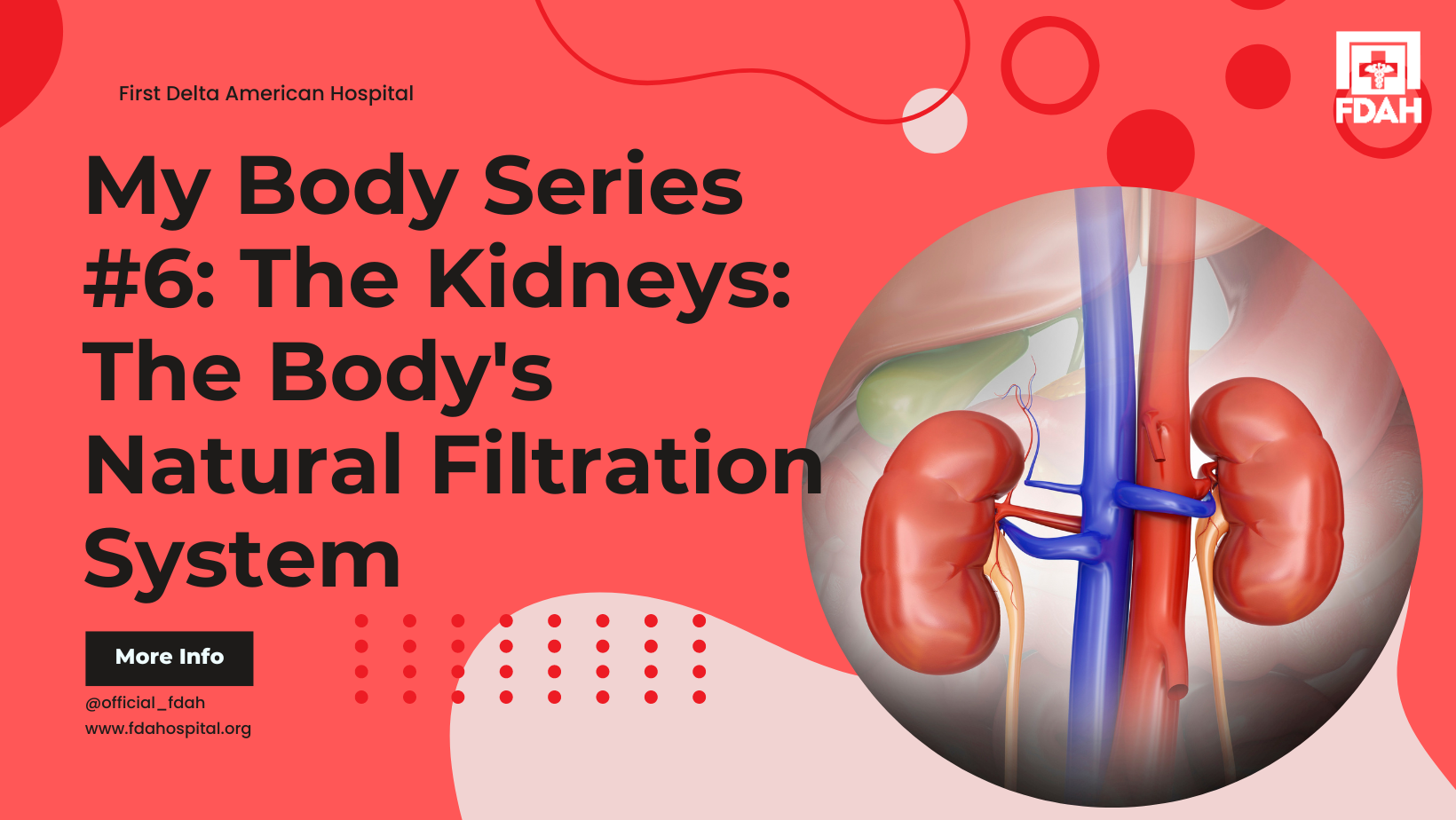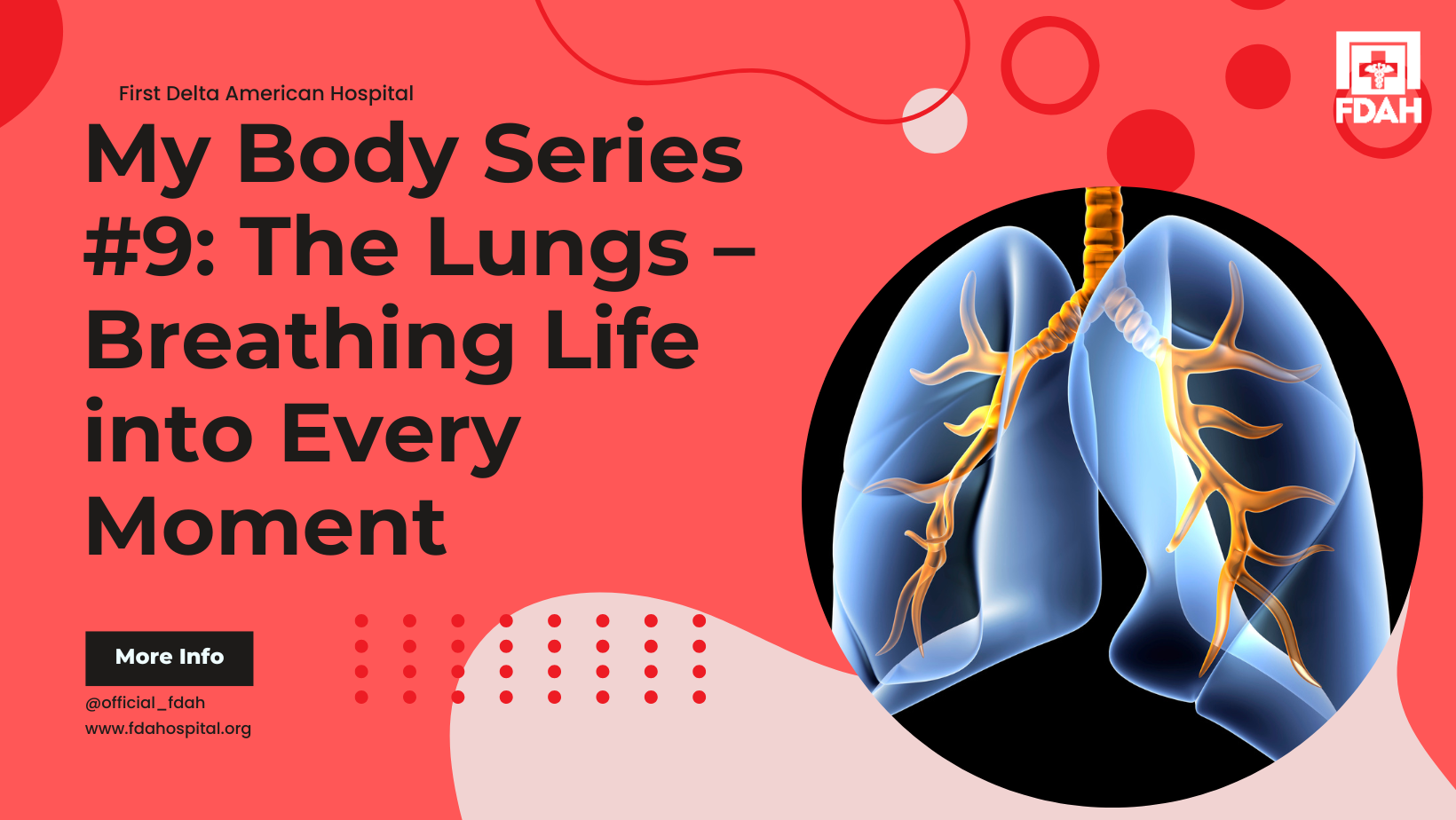Welcome back to the “My Body” series! In this installment, we’re exploring one of the most vital organs that keeps us alive and thriving: the heart. Often called the powerhouse of the human body, the heart is more than just a pump; it’s a symbol of life, vitality, and resilience. Let’s dive deep into the anatomy, function, and health of the heart, and discover why taking care of this incredible organ is crucial for our overall well-being.
The Marvels of the Heart
1. The Basics: Structure and Function
Your heart is a muscular organ roughly the size of a fist, located slightly to the left of the center of your chest. It functions as the body’s circulatory pump, ensuring that oxygen-rich blood reaches every part of the body while removing waste products like carbon dioxide.
Structure:
- Chambers: The heart has four chambers: two upper chambers called atria (right and left atrium) and two lower chambers called ventricles (right and left ventricle).
- Valves: Four valves regulate blood flow through the heart: the tricuspid valve, pulmonary valve, mitral valve, and aortic valve. They ensure blood flows in one direction, preventing backflow.
- Blood Vessels: Major blood vessels connected to the heart include the aorta, vena cava, pulmonary arteries, and pulmonary veins. They transport blood to and from the heart.
Function:
- Right Side: The right atrium receives deoxygenated blood from the body through the vena cava. This blood flows into the right ventricle, which pumps it to the lungs via the pulmonary arteries for oxygenation.
- Left Side: The left atrium receives oxygenated blood from the lungs through the pulmonary veins. This blood flows into the left ventricle, which pumps it to the rest of the body through the aorta.
2. The Heart’s Superpowers
Pumping Blood: The heart beats about 100,000 times a day, pumping approximately 2,000 gallons of blood through a network of blood vessels that stretch over 60,000 miles.
Electrical System: The heart’s rhythm is controlled by an electrical conduction system, which includes the sinoatrial (SA) node, atrioventricular (AV) node, and His-Purkinje system. This system ensures the heart beats in a coordinated and efficient manner.
Self-Repair: Although the heart has limited regenerative capacity compared to some other tissues, it can adapt and compensate to a certain extent when damaged, particularly through the formation of scar tissue and remodeling of healthy tissue.
Endurance: The heart is remarkably resilient, capable of functioning under varying levels of stress, physical activity, and emotional states without missing a beat.
Fascinating Facts About Your Heart
- Heartbeat: On average, a person’s heart beats about 2.5 billion times in their lifetime.
- Blood Flow: At rest, it takes about one minute for blood to travel from the heart to the toes and back.
- Heart Rate: The average adult heart rate is between 60 to 100 beats per minute. Athletes often have lower resting heart rates due to increased cardiovascular efficiency.
- Gender Differences: Women’s hearts typically beat faster than men’s, even at rest.
- Emotional Connection: The heart responds to emotions. For example, stress and excitement can cause the heart rate to increase.
Common Heart Conditions and How to Handle Them
1. Coronary Artery Disease (CAD)
CAD is the most common type of heart disease, caused by the buildup of plaque in the coronary arteries, which reduces blood flow to the heart muscle.
Prevention and Management:
- Healthy Diet: Eat a diet rich in fruits, vegetables, whole grains, lean proteins, and healthy fats.
- Exercise: Engage in regular physical activity, aiming for at least 150 minutes of moderate-intensity exercise per week.
- Avoid Smoking: Smoking is a major risk factor for CAD. Quitting smoking significantly improves heart health.
- Manage Stress: Practice stress-reducing techniques such as meditation, yoga, and deep breathing exercises.
- Regular Check-ups: Monitor blood pressure, cholesterol levels, and glucose levels through regular medical check-ups.
2. Hypertension (High Blood Pressure)
Hypertension is a condition where the force of blood against the artery walls is too high, increasing the risk of heart disease and stroke.
Prevention and Management:
- Dietary Changes: Reduce sodium intake and eat a balanced diet with plenty of potassium, calcium, and magnesium.
- Exercise: Regular physical activity helps lower blood pressure.
- Weight Management: Maintain a healthy weight to reduce the strain on your heart.
- Limit Alcohol: Consume alcohol in moderation, as excessive drinking can raise blood pressure.
- Medication: Take prescribed medications as directed by your healthcare provider.
3. Heart Failure
Heart failure occurs when the heart is unable to pump blood effectively, leading to symptoms like shortness of breath, fatigue, and fluid retention.
Prevention and Management:
- Medication: Follow your healthcare provider’s recommendations for medications that help manage heart failure.
- Lifestyle Changes: Adopt a heart-healthy diet, exercise regularly, and avoid smoking and excessive alcohol consumption.
- Monitor Symptoms: Keep track of your symptoms and report any changes to your healthcare provider promptly.
- Support Networks: Join support groups for heart failure patients to share experiences and gain emotional support.
4. Arrhythmias
Arrhythmias are irregular heartbeats that can range from harmless to life-threatening. Common types include atrial fibrillation, bradycardia, and tachycardia.
Prevention and Management:
- Lifestyle Modifications: Avoid caffeine, alcohol, and other stimulants that can trigger arrhythmias.
- Medication: Take medications as prescribed to control heart rate and rhythm.
- Medical Procedures: In some cases, procedures such as cardioversion, ablation, or the implantation of a pacemaker or defibrillator may be necessary.
- Regular Monitoring: Regular check-ups and monitoring by a cardiologist are essential.
Keeping Your Heart Healthy
Maintaining heart health is a lifelong commitment that involves adopting healthy habits and making informed choices.
1. Heart-Healthy Diet
Balanced Nutrition: Eat a variety of nutrient-rich foods, including fruits, vegetables, whole grains, lean proteins, and healthy fats.
Reduce Sodium: Limit your intake of salt to help control blood pressure.
Healthy Fats: Choose sources of healthy fats, such as avocados, nuts, seeds, and olive oil, while avoiding trans fats and saturated fats.
Moderate Sugar: Reduce the consumption of added sugars and sugary beverages.
2. Physical Activity
Regular Exercise: Aim for at least 150 minutes of moderate-intensity aerobic exercise or 75 minutes of vigorous-intensity exercise per week.
Strength Training: Include muscle-strengthening activities at least two days a week.
Stay Active: Incorporate physical activity into your daily routine, such as walking, cycling, or taking the stairs.
3. Stress Management
Relaxation Techniques: Practice relaxation techniques such as deep breathing, meditation, and yoga.
Hobbies: Engage in activities and hobbies that you enjoy to help reduce stress.
Social Connections: Maintain strong social connections and seek support from friends, family, or support groups.
4. Avoid Harmful Habits
No Smoking: Quit smoking and avoid exposure to secondhand smoke.
Limit Alcohol: Consume alcohol in moderation, if at all.
Healthy Weight: Maintain a healthy weight through diet and exercise.
5. Regular Health Screenings
Blood Pressure: Monitor your blood pressure regularly and keep it within a healthy range.
Cholesterol Levels: Check your cholesterol levels periodically to manage your risk of heart disease.
Blood Sugar: Keep your blood sugar levels under control, especially if you have diabetes.
Regular Check-ups: Visit your healthcare provider for regular check-ups and screenings to detect any potential issues early.
Conclusion
Your heart is the powerhouse of your body, tirelessly working to keep you alive and well. By understanding its functions, recognizing the signs of potential issues, and adopting heart-healthy habits, you can ensure your heart remains strong and resilient. Remember, taking care of your heart is an investment in your overall health and longevity.
Stay tuned for the next installment in the “My Body” series, where we’ll explore another amazing aspect of the human body. Until then, keep your heart healthy and keep living life to the fullest!




